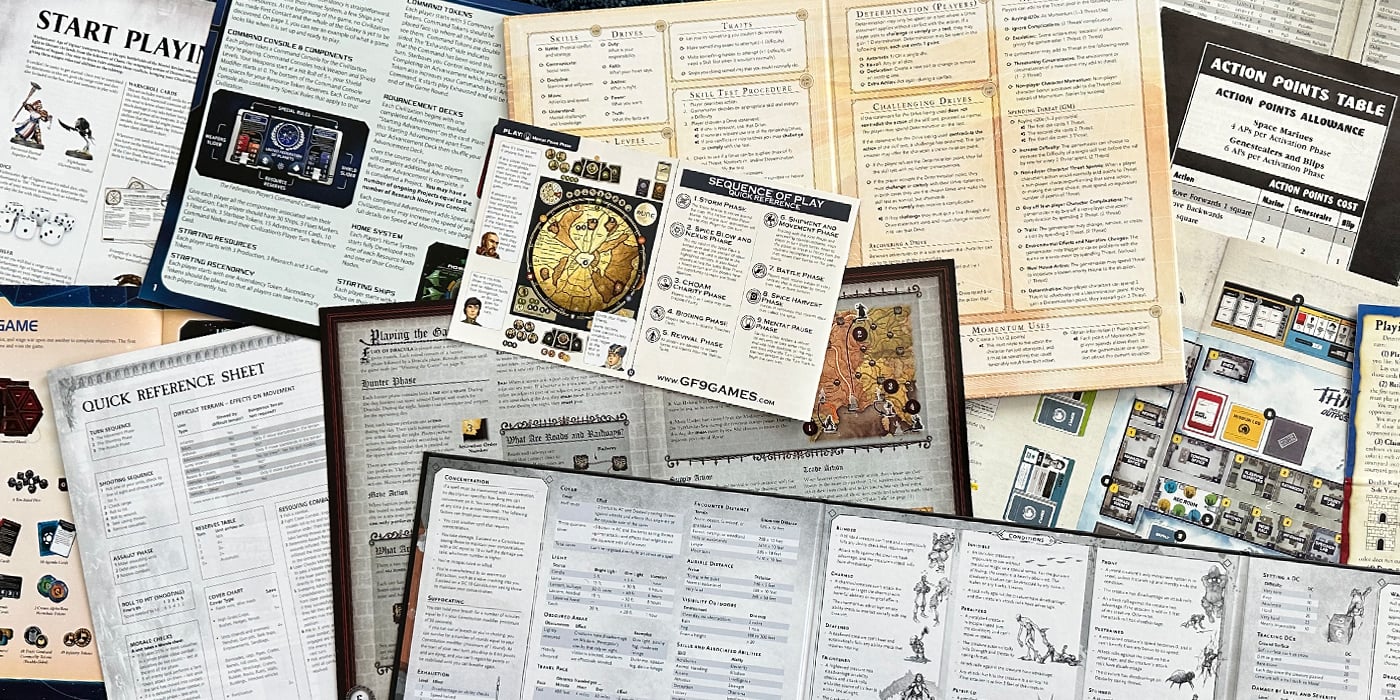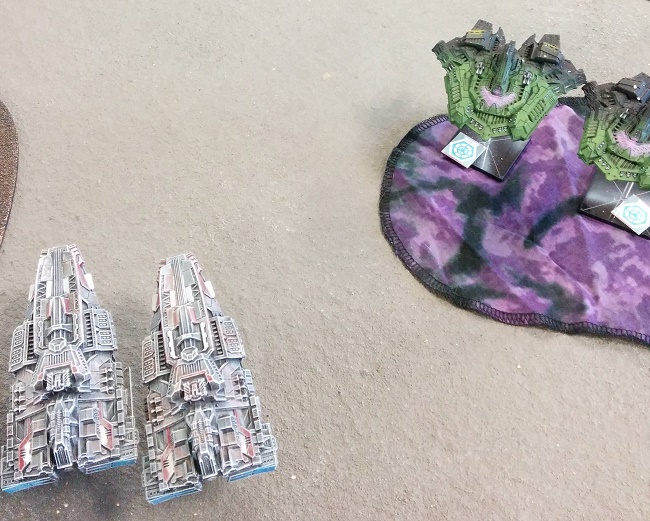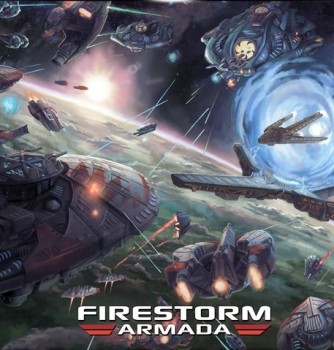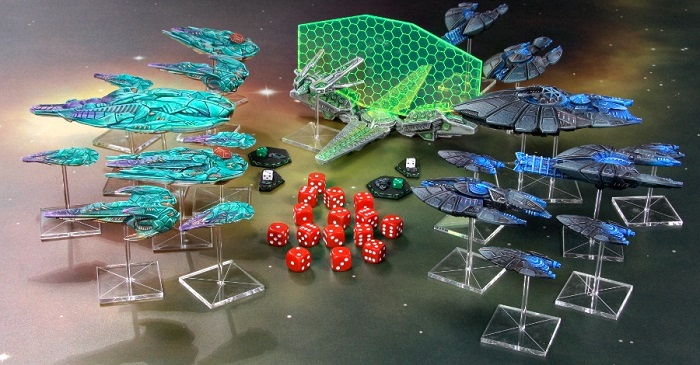Firestorm Armada: Introduction to War, Part 2


This is part 2 of the series introducing Firestorm Armada. This article focuses completely on giving a rough idea of the basic mechanics of the game.
The Dramos’ Revenge lined up her massive Arcbolt rail gun on the target that was well beyond visual range. Advanced targeting computers with the help of Rense System Navy Harpy Escorts zeroed in on the charging Terran Battleship. A second later the massive rail gun fired a massive metal slug at super sonic speeds toward the enemy…

Relthoza and Terran Battlecruisers about to tear into each other. (Models owned by duck_bird from Spartan Forums)
Game Overview
In Firestorm Armada, you control fleets of military space ships as they battle for supremacy across galactic war zones. Fleets of warships are the focus of Firestorm, and you will be able to put more ships onto the table than what I have seen, thus far, in Star Wars Armada. The starter sets (around 500 point Patrol Fleets) usually consist of 4 to 5 frigates, 3-4 cruisers, and a battleship. These are legal fleets, but are the smallest size of fleets typically fielded. The game plays like an abstract space opera, focusing on ease of play over hyper-realistic physics. If you are looking for a detailed space simulator, I do not recommend Firestorm Armada. However, if you just want to play a tactical game set in space, Firestorm is worth trying, especially since the rules are free! It is also a great game to try if you miss Battlefleet Gothic, and nothing short of spaceship combat is going to scratch that itch.
Games generally last between 3-5 hours, in my experience. Fleet sizes and familiarity can reduce play time below 3 hours or increase it over 5. The biggest time consumer is the movement phase, as in general all models must move (you can make ships come to a full stop, but most ships would rather be moving). Ships move forward a number of inches based on their stats profile, and turns are made in 45 degree angle increments. This makes maneuvering a huge part of the game and can easily cause defeat or solidify victory. With the inability to just move in any direction or turn on a dime (especially with Battleships or their bigger Dreadnought cousins), poor movement can leave your heavy hitting ships without any viable targets, or even worse, leave a ship’s vulnerable rear arc open to devastating attack. Often, I’ve seen one bad decision in the movement phase result in a whole squadron being effectively isolated for several turns (or it colliding with a planet), On the other hand, a genius maneuver can wind up putting a ship in the perfect position for a massive output of damage into the enemy fleet.
Firestorm uses a ‘bucket of dice’ mechanism for your attack value number (meaning the number of dice thrown for an attack). Typically, when squadrons link their weapons into an attack, a player will roll between 10 and 20+ dice in a single volley. In general 4, 5, and 6s are hits with 6s counting as two hits and allowing another die to be rolled. The goal is to get a greater number of hits than the target ship’s Damage Rating (DR) or Critical Rating (CR) thresholds, found on the ship’s profile (all the ship stats and fleet guides are also free).
When 6’s count as two hits and give you another die to roll (which can also be another six which counts as two more hits AND gives you another die to roll) it does add a level of luck to the outcome of any given attack, but it does not turn the game to into a competition where whoever rolls the most 6’s wins. Tactics are still very vital for victory. The player that consistently maximizes dice pools will be the most likely to roll those powerful sixes.
One advantage of these ‘exploding sixes’, is that even the most damaged vessels still have a chance to keep on fighting, despite most of their weapons being disabled (damage reduces the number of attack dice a ship may roll with many attacks). Additionally, this allows for those unlikely hero moments where that lone damaged cruiser charges forward at full speed, guns blazing, and deals crippling last minute damage before finally being turned into scrap by return fire.
In Firestorm Armada, one player activates a whole squadron of vessels (usually 1-6 models), going through movement, firing weapons, and anything else the squadron needs to do. Once that squadron has completed its turn, then the other player activates a squadron in the same way. This form of alternating squadrons keeps both players engaged, and it prevents a first turn ‘alpha strike’ from being overly harsh. In some games, the roll for first turn can arguably be the most important one, not so in Firestorm Armada. In addition, the alternating activation systems adds a level of forward planning and tactics to deciding when to activate a ship during a turn. A poorly timed activation could result in leaving a squadron exposed, or allow the opponent to weaken it before it can bring its guns to bear on a target. Initiative is rolled at the beginning of each round, meaning, who goes first could change every turn.
This is merely an overview of some of the game’s basics. If you want to read more, download the free rulebook here:
FREE Firestorm Armada Rulebooks (pdf)
Almost all the ships stats are also found there for free, allowing you to look over the different factions’ stats. Currently, the only ships without stats in the online PDF’s are the Return of the Overseers boxed set’s Directorate and Aquan vessels, but the starter (which is the only way to get those models at the moment) comes with their rules.
Balance:
I find Firestorm Armada to be a well-balanced game. Some fleets are more straight-forward to use, making them easier to learn but also giving the illusion that those factions are more powerful than they would be to a group of experienced players. However, I have never found that showing up with specific combos/factions means the game is hopeless from the start for one’s opponent. Some match-ups tend to be bad for one side simply based on how the factions’ strengths are set up, but the disadvantaged faction still has a chance of being victorious, and is not stuck in a game where they will be defeated no matter what they do. In fact, fleet lists are supposed to be crafted after knowing one’s opponent and after deciding on scenario. This ensures that each fleet can play to their strengths and not have to worry about a rock-paper-scissors situation.
Next set of articles will cover the Core six factions. Which faction interests you the most?



